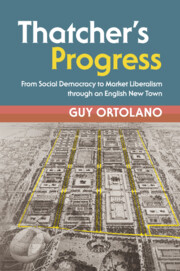What better laboratory for an experiment in racial integration could there be than the nascent community of a new town? The architect Roy Gazzard posed this question in 1969, as he embarked on designing the new town of Killingworth in northern England. A self-proclaimed “social engineer,” Gazzard applied his experience as a town planner in colonial Uganda to shaping a new community in the postimperial metropole. Historians have long recognized the way that built forms were translated from metropole to colony, but the reverberations of colonial planning in the postwar European welfare states have received little attention. In this article I use intellectual biography to chart the trajectory of notions of community, spirituality, space, and place as they migrated from colonial Uganda to postimperial Britain. I focus on the career of Roy Gazzard, an outspoken social engineer and devout Christian, who hoped to use his colonial urban planning experience to counter what he saw as the increasingly secular and centrifugal forces in modern British society. An examination of letters, private paper, lectures, planning documents, and diagrams held in the newly opened archive of Gazzard's work illuminates the course of colonial expertise as it was refracted back into the postcolonial metropole.
